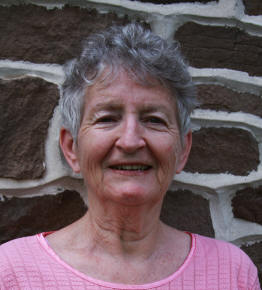Faith Peterson
Adams County Master Gardener
 Over 65 million Americans enjoy the pleasure of feeding and attracting birds to their backyard. You can become a bird feeder by following a few simple suggestions. The first step is to determine the best spot for your feeder or feeders. Pick a
location that has easy access all year. When the weather is bad, you may not want to fill a feeder that is in a difficult to reach area.
Over 65 million Americans enjoy the pleasure of feeding and attracting birds to their backyard. You can become a bird feeder by following a few simple suggestions. The first step is to determine the best spot for your feeder or feeders. Pick a
location that has easy access all year. When the weather is bad, you may not want to fill a feeder that is in a difficult to reach area.
Next consider cleanup. Pick a location where discarded seed shells and bird droppings won't be a clean-up problem. Also, think abut squirrels. A squirrel-proof feeder or a feeder with a pole and baffle, at least 10 feet from any tree branches will
prevent squirrels from jumping from tree to feeder.
Keeping the seed dry is very important. Wet seed will spoil and become moldy, and the mold is bad for bird's health. Look for feeders with drainage holes in the bottom, so that if any moisture gets in, it can drain away.
Cleaning the feeder is an important part of your new hobby. Diseases like salmonella grow in moldy wet seed. Keeping your feeders clean should not be a major project. The types of seed used will often dictate the cleaning frequency. The higher the
oil content in seed, the more frequently cleaning should take place. A Niger (sometimes called thistle seed) feeder and one for sunflower meats should be cleaned on a 2 to 3 week interval.
Whole sunflower seed and suet feeders should be cleaned about once a month. Wash feeders in a bucket of hot soapy water to which you add about ¼ c chlorine bleach. A bottle brush will help in cleaning out corners. After rinsing thoroughly, allow the
feeder to completely dry before refilling and hanging.
Many birds have seed preferences which you want to consider when you purchase seed. Most prefer sunflower, while some prefer millet. A few prefer peanuts. None seem to favor other grains used in mixes; corn, Milo, red millet, oats, wheat and canary
seed.
Birds will kick out seed that they do not eat, which winds up on the ground under the feeder. There they are likely to be contaminated by dampness and bird droppings, and may also attract rodents. It is much more economical in the long run to
purchase only the seeds that the birds eat.
Black oil sunflower seeds are the favorite of all birds. White proso millet is enjoyed by doves and sparrows. Safflower seed is a treat for cardinals, doves and white-throated sparrows. Niger seed is loved by goldfinches, house finches and purple
finches. Unsalted peanuts attract woodpeckers, nuthatches, blue jays, and titmice.
Once your bird feeder is up and in operation, consider providing a water source for the birds. A birdbath on the ground is perfect. To keep the water from freezing, purchase a birdbath heater which goes directly into the water, and is plugged into a
normal outlet. Provide something for the birds to climb up on if the water is too deep. Again, keep the birdbath clean.
One important aspect of bird feeding is safety for the birds. Place your feeder about 6 feet away from a shrub or tree, so that the birds can fly to the safety of the shrub. The most frequent predators at the feeder are cats. Please keep your cat
indoors.
The other predator is a natural one - hawks. Sharp-shinned and Cooper's hawks play an important ecological role, and they do sometimes eat birds at a feeder. Consider yourself an observer of nature if you see such an event. Keep in mind that all
eagles, hawks and owls are protected by Federal law.
One way to keep down the cost of backyard bird feeding is to plant natural foods (native plants) in your garden. Some good flower choices are cosmos, sunflowers, zinnias, poppies, asters, coreopsis, purple coneflower, joe-pye weed, black eyed Susan,
goldenrod and sedums.
Excellent berry bearing shrubs include serviceberries, chokecherries, elderberries, blackberries, hollies, dogwood, redberry buckthorn, and roses. Good vine choices include bittersweet, honeysuckles and Virginia creepers. Fruit and seed trees to
consider are hackberries, junipers, red cedars, crabapples, cherries, mountain ashes, tulip tree, spruces and pines.
Don't "clean up" the garden in the fall by removing all the flower seed stalks. The birds will perch and feed on the flower seeds well past Christmas. Consider a second life for your evergreen Christmas tree - put it outside and decorate it with pine
cones rolled in peanut butter; garlands of unsalted popcorn and cranberries, and a good dusting of sunflower seed. The birds will love your tree!
Read other articles on birds, wildlife & beneficial insects
Read other articles by Faith Peterson